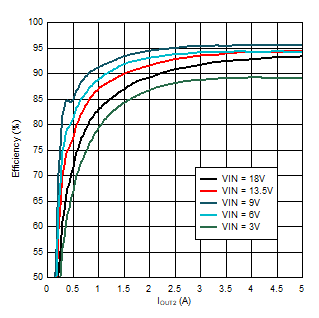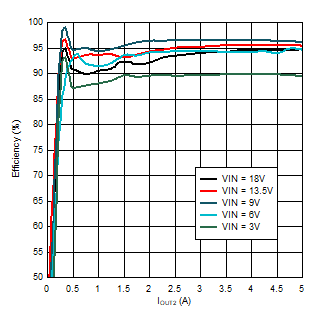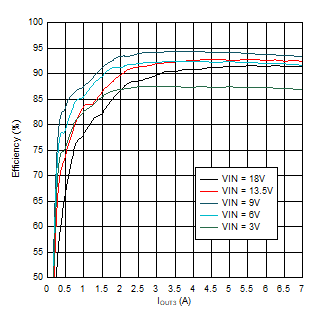SLVUBZ2A September 2020 – December 2020 LM5127-Q1
5.1 Efficiency
Figure 5-1 through Figure 5-6 show the efficiency graphs for the EVM.
 Figure 5-1 Efficiency vs. IOUT2 (FPWM,
IOUT3 = 0 A)
Figure 5-1 Efficiency vs. IOUT2 (FPWM,
IOUT3 = 0 A) Figure 5-3 Efficiency vs. IOUT2 (DEM,
IOUT3 = 0 A)
Figure 5-3 Efficiency vs. IOUT2 (DEM,
IOUT3 = 0 A) Figure 5-5 Efficiency vs. IOUT2 (Skip mode,
IOUT3 = 0 A)
Figure 5-5 Efficiency vs. IOUT2 (Skip mode,
IOUT3 = 0 A) Figure 5-2 Efficiency vs. IOUT3 (FPWM,
IOUT2 = 0 A)
Figure 5-2 Efficiency vs. IOUT3 (FPWM,
IOUT2 = 0 A) Figure 5-4 Efficiency vs. IOUT3 (DEM,
IOUT2 = 0 A)
Figure 5-4 Efficiency vs. IOUT3 (DEM,
IOUT2 = 0 A) Figure 5-6 Efficiency vs. IOUT3 (Skip mode,
IOUT2 = 0 A)
Figure 5-6 Efficiency vs. IOUT3 (Skip mode,
IOUT2 = 0 A)